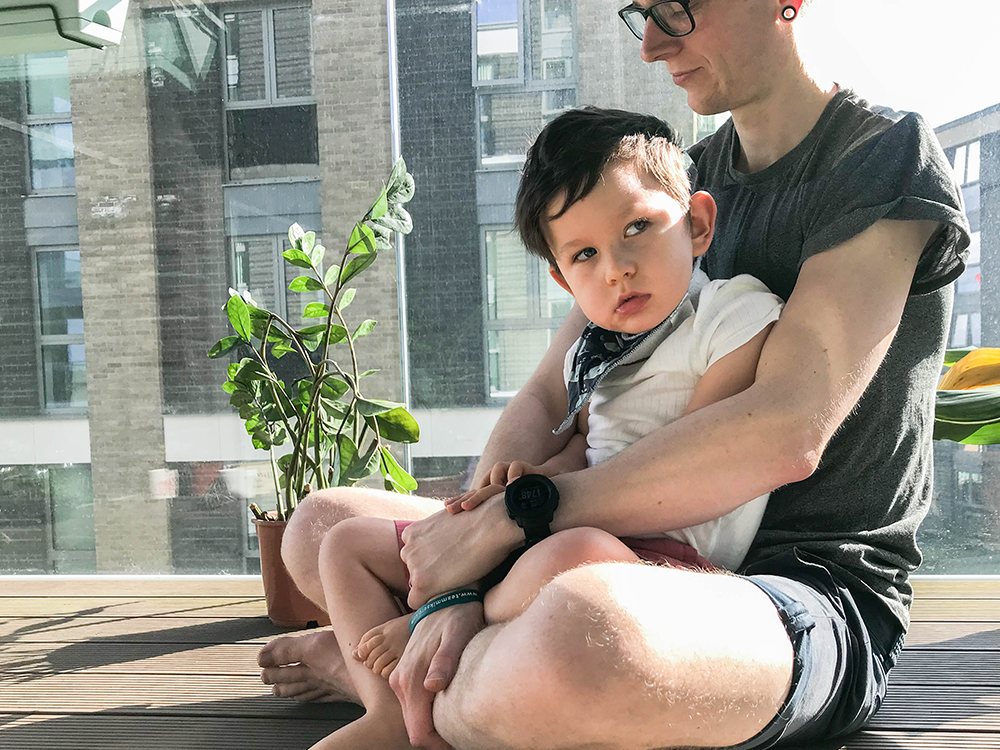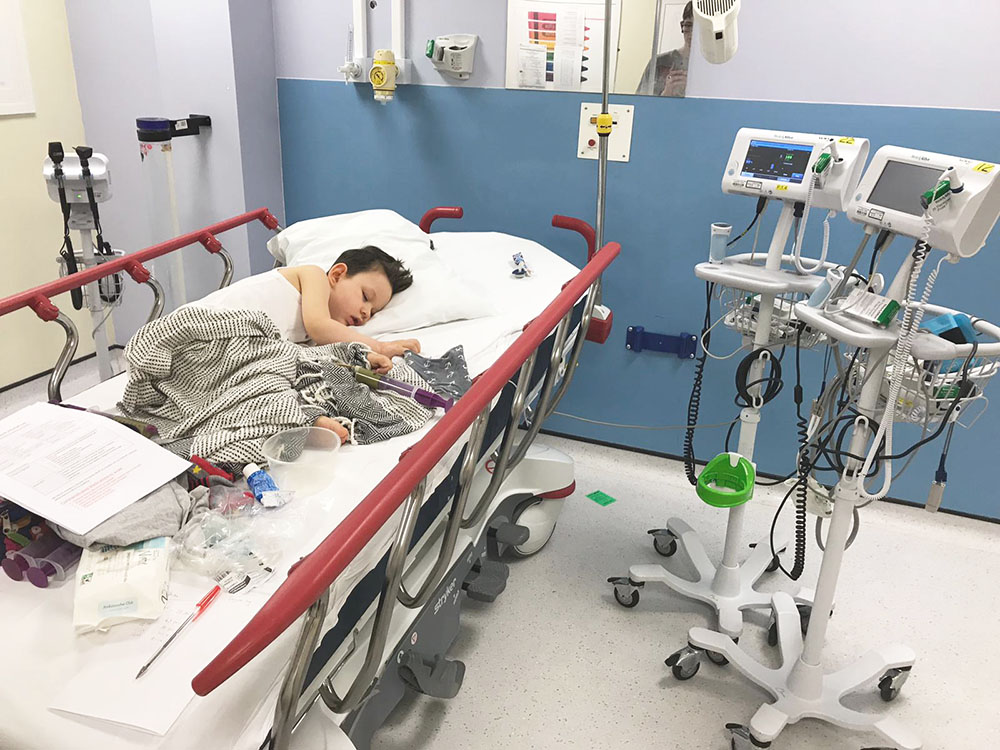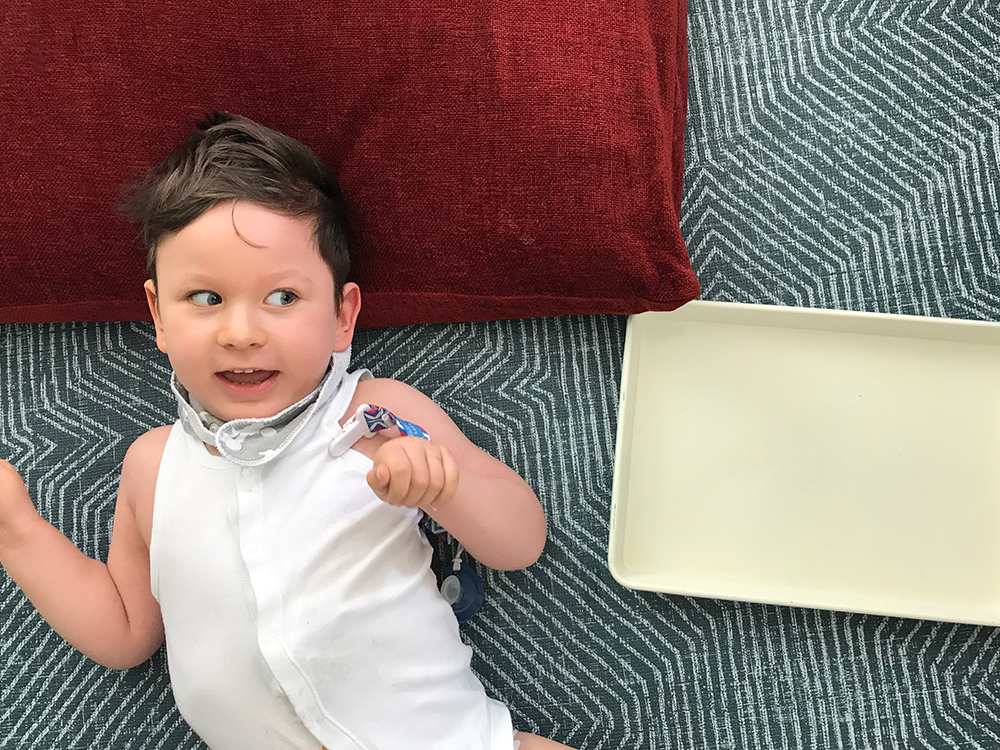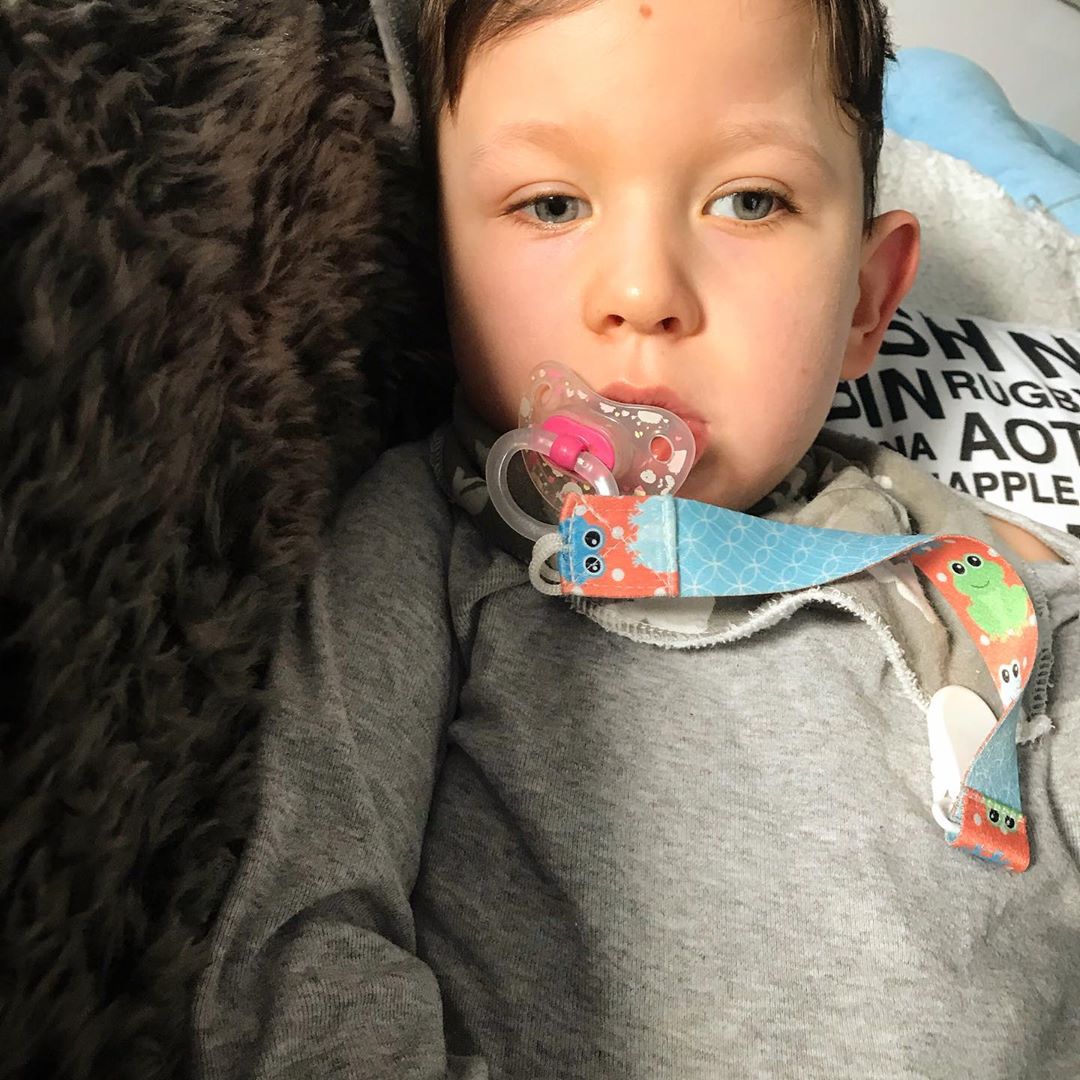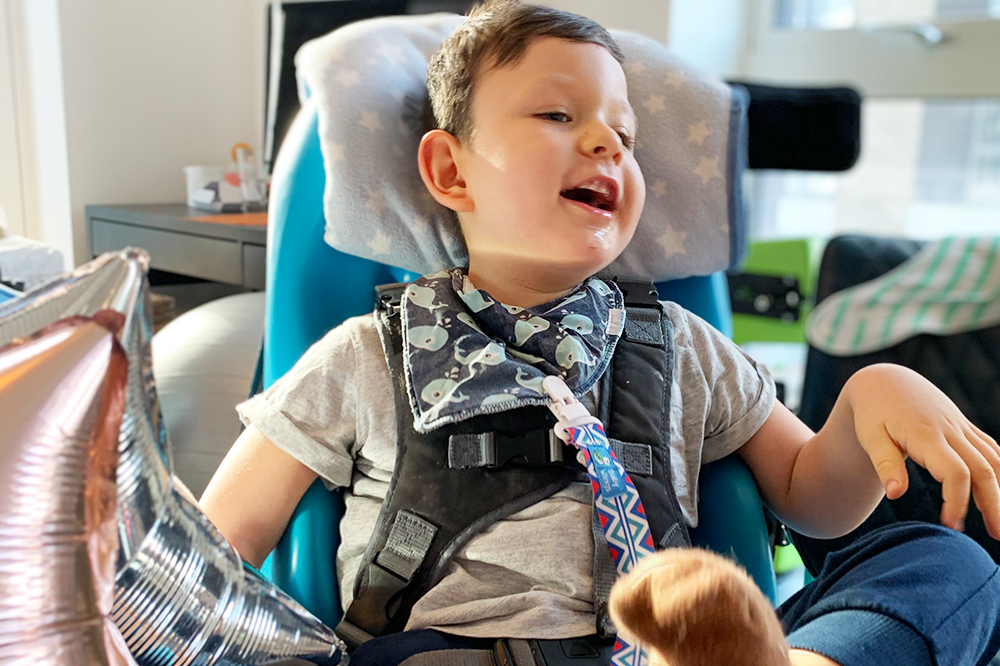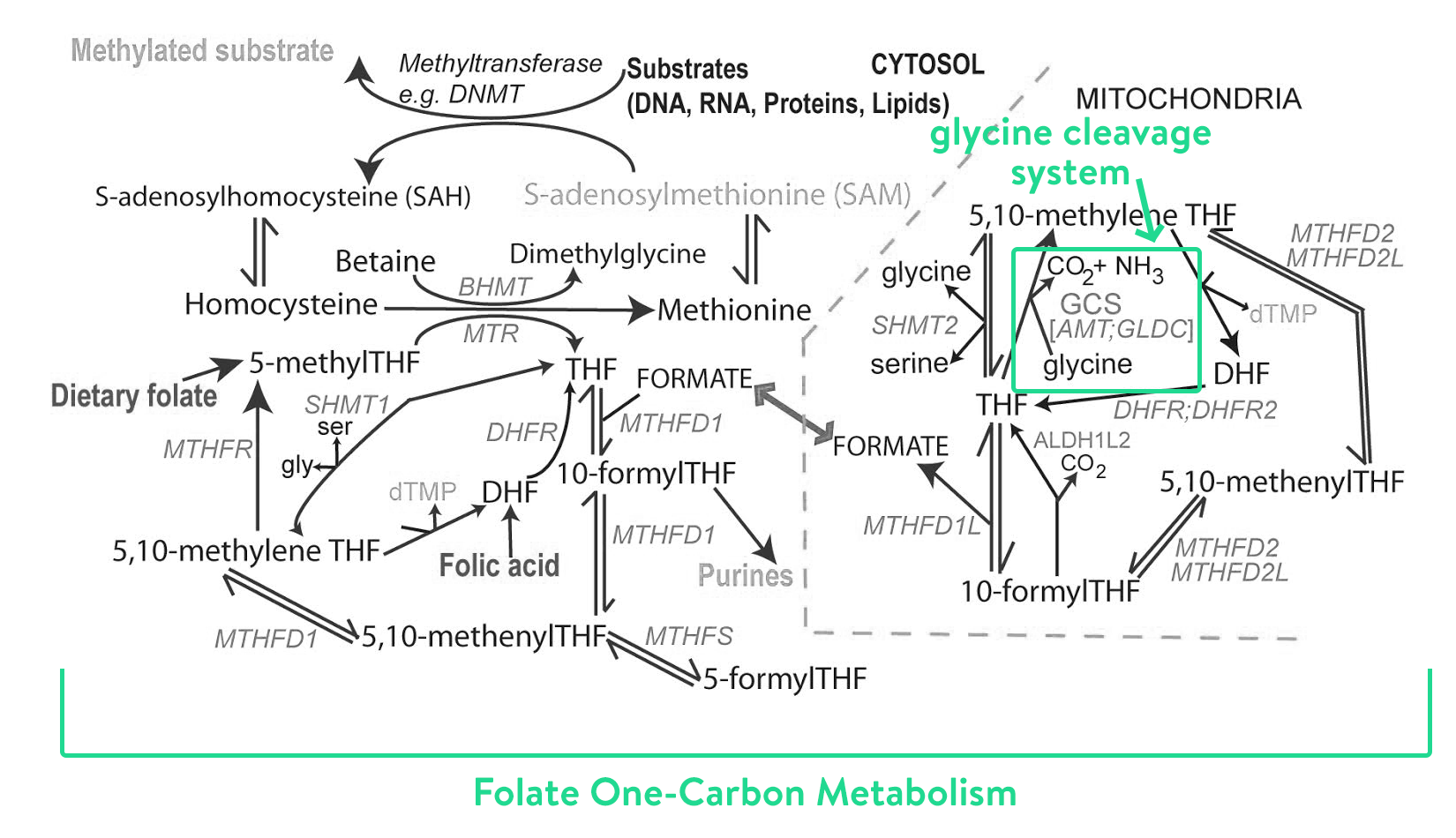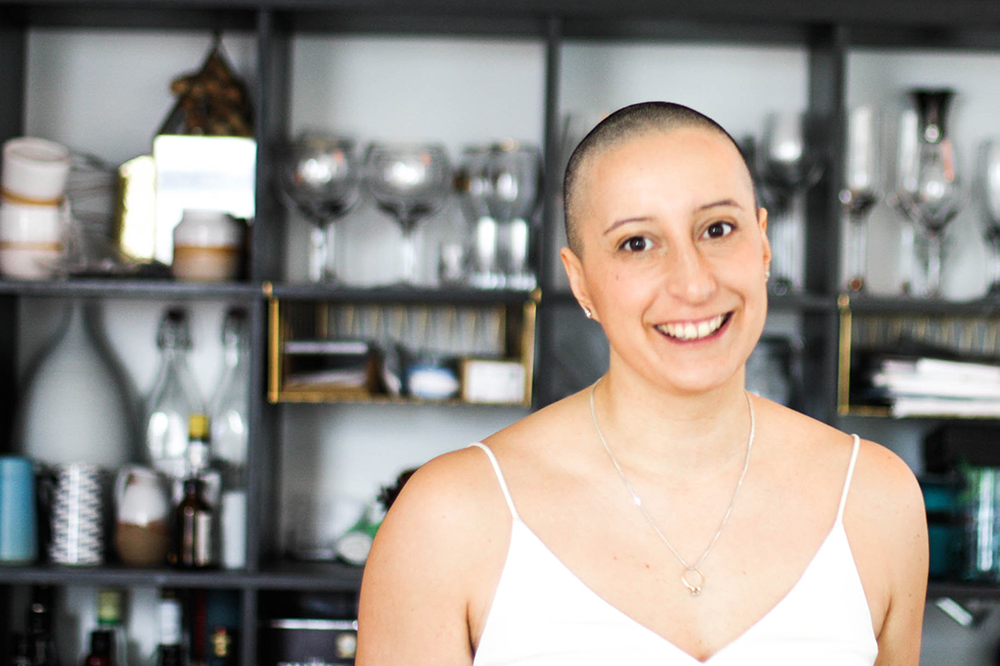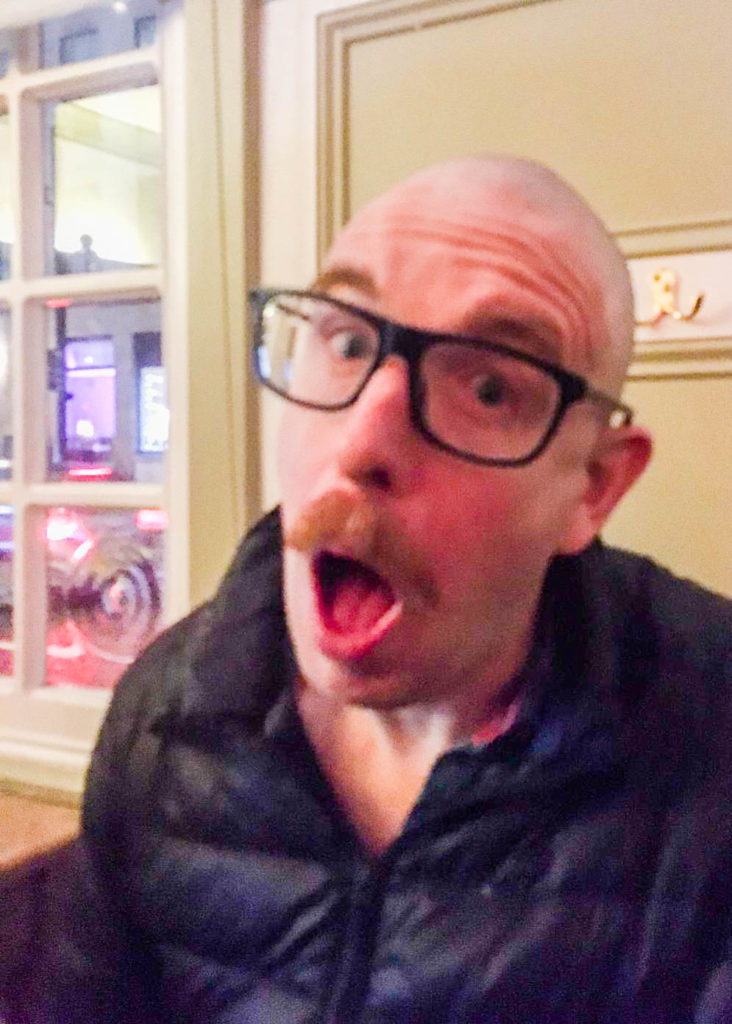
TLDR: I did an in-depth NKH Charity review, a due-diligence exercise to make sure our donations are going to the best place possible. We can no longer in good consciousness support Joseph’s Goal, and as a result of their behaviour, have founded our own charity, the Mikaere Foundation. Obviously, that renders our independent review moot, really. But hopefully it gives you an insight into the levels which we hold ourselves accountable.
We’d love your support with the Mikaere Foundation, but also would highly recommend NKH Crusaders. As I mentioned, I’m really sad about this, but we can not in good conscience recommend the Drake Rayden Foundation due to their lack of transparency (btw, this was not the outcome we were expecting with DRF, womp).
To be clear, this is an independent review, done for our own peace of mind. We reached out to the three charities who knew we were doing a review, but all views are our own and we obviously weren’t compensated in any way.
Links for the NKH Crusaders below, and you can find more about the Mikaere Foundation at www.mikaerefoundation.org.
——-
Over the last three years, we as a family have raised well over £170,000 for NKH, which is no small feat for a single income special needs family. But I also know a lot of that is privilege.
90% of Mikaere’s healthcare costs are met by the NHS. He receives additional, private physio which is generously paid for by my parents, and extra therapies (a mix of ABM, Osteo, CME, movement therapy, hippotherapy etc) which comes out of a special therapy fund which friends and family have been adding into on birthdays and at Christmas (can I mention again how lucky we are?)
With his healthcare needs taken care of (again, such a privilege), we’re free to fundraise with a long term view. I have to be honest though, that we’ve managed to raise so much £££ is an indication of how much amazing support we have around us. That so many of our friends and loved ones have stepped up to donate/volunteer/participate has been everything.
It also means that I feel obliged to make sure we’re doing the right thing with our funds. That it’s going to a cause that is responsible, transparent and has the most impact.
It’s been over three years since we started stumbling through the world of NKH and we’ve found our feet a bit now. I wanted to do an NKH Charity Review to make sure we were donating responsibly (that sounds serious, but it started more as oh, let me just look up to see if they are a registered charity and grew into something much bigger).
It turned into a bit of a shambles with one (seriously, said charity shared a post that implied I was doing “the devil’s work” by asking questions, and asked the Lord to protect them from ‘spiritual warfare’ – I’m not that scary, I promise. Nor did I come into this review with malicious intent. Also, asking for transparency and accountability is not spiritual warfare? It’s the basis of trust with people who are giving you your funds, which allows you to act?). Still, spiritual war and petty posts aside, I was pleasantly surprised by the majority of work the NKH community is doing.
Because that’s the other thing to remember, these aren’t big faceless charity organisations with loads of employees. The community isn’t that large. For me it was so so important to remember that there were real people behind these organisations. These are charities run by families under the same strain and stress as we are. I’ve met all the charity heads in person, and honestly, they’re all really lovely people.
Caveat before we start: I only looked at English based charities, as I’m a philistine monoglot for only speaking the one language fluently. I know there is Les Petits Bourdons in France, and NKH Deutsches Familien Netzwer in Germany, and probably many more I’m unaware of. Hey ho.
I chose the three main/larger charities to review: Joseph’s Goal, NKH Crusaders and the Drake Rayden Foundation. Between them they are the most influential within the community (particularly JG and NKHC) and hit all the varied research teams.
I started with Joseph’s Goal. Update: We are no longer supporters of Joseph’s Goal.
We’ve been supporters since Mikaere was born, as they’re the only UK NKH Charity. In a nutshell, their mission is to raise awareness of NKH and raise funds for NKH Research and family support.
The bulk of their funds goes towards Prof. Nick Greene at UCL, who is working on gene replacement therapy, understanding the glycine cleavage system (in particular the downstream effects of glycine when the GCS isn’t working), and working on a trial for a molecular alternative to Sodium Benzoate. He has three mice models, two cellular models and a zebrafish model.
All of that is publicly available on the UCL website, here. Nick also acknowledges Joseph’s Goal on his website, and in the research papers he’s published (like this one).
And I know that the bulk of Joseph’s Goals funds go to Prof. Nick, thanks to the UK Charity Commission. Charities in the UK are quite tightly regulated, which helps prevent fraud. Every year the charity has to submit an Annual Report, which is publicly available. The 2019 one is here.
In addition, UCL acknowledges the payments in a letter or significant plan milestones, which Joseph Goal usually shares to their Fb page. It’s also how I know that JG contributions have accelerated research by 12-18 months. That’s huge. (for example these two posts).
Going back to the charity commission annual report, it clearly lists who is on the board (Emma and Paul Kendrick, Joe’s parents. Ann and Norman Kendrick, Joe’s grandparents, Alan and Sue Houghton, Mark Hayes and Greg Farimond). I have to say, seeing this list of names bought a huge amount of comfort. It’s a comfortable mix of NKH family and those with independent perspectives, to make sure JG is making good choices. It helps that I recognised a large number of the names, and had met/conversed with most of them.
The report also shows clearly how they’re following the charity commission guidance on public benefit, as well as clear acknowledgment (with figures!) as to the source of their income.
As an example, it lists the donations by Team Mikaere and family at £48,467 for the 2019 period. Joseph’s Goal raised a total of £195,434 that year.
It also lists payments Joseph’s Goal made. In the 2019 financial year Joseph’s Goal donated £180,000 to Prof. Nick Greene. They spent £19.5k on overheads (such fundraising events, insurance etc) and it’s all pretty clearly laid out and in line with their vision. Some of their funding went to paying for the Kendrick family to go to the Boston conference, which makes me slightly uncomfortable, but you can see why they do that.
They also have an independent accountant review their accounts, to ensure that their accounts were all above board.
The best bit is that all that information is publicly available, to anyone with an internet connection.
There’s also a lot of what happens behind the scenes. Every month, Alan, the chairman of Joseph’s Goal sends us a ‘Team Mikaere’ contribution spreadsheet that tracks every single donated penny raised by us. It’s an intimidating bit of accounting.
The other factor is the responsiveness of the team. Alan, the JG Chairman generally responds to our emails and questions.
In short, Joseph’s Goal:
- is transparent about most things. Their accounts, their board, their vision and their decision making.
- Prof Nick Greene openly acknowledges their support, and that the funds from JG is having a significant and positive impact on their research.
Next up, NKH Crusaders.
I have a soft spot for these guys, Kristin (who leads NKH Crusaders) is an absolute wonder. She’s been so kind to me, that I can’t not adore her.
Things here got a bit trickier, because NKH Crusaders is not technically a charity, as much as it is a social enterprise. Talking to Kristen about it, I understand her reasoning. In the US, running a charity is EXPENSIVE. The required overheads and set up costs are prohibitive. I also read a few articles that said for every $1 donated, approximately $0.23 goes to charity overheads. I mean, that’s a significant amount. If almost a quarter of your hard won fundraising is lost to overheads, you have to work harder for each $1 donated. It does make sense to send that entire $1 to research. I get that. I’m all for having a greater impact on the research too. In saying that, I know they’re working towards their 501c3 status (which is a nonprofit organisation under the federal law in the United States) and will hopefully be registered in the next year or so. The reason they’re doing this is to become more transparent, so that’s positive.
Their vision is pretty clear: to raise awareness for NKH and to support NKH Research towards a long term, effective treatment.
Which they do, by hosting the Boston NKH Conference every year, and donating funds to both Dr Katsuri Halder’s team at the University of Notre Dame and Dr Van Hove at University of Denver.
Side note: while they don’t offer funding support to NKH families, they do offer a table specifically for the Ellie-Kate Helping Hands at their annual fundraiser. I don’t doubt that anyone who knew Ellie-Kate or knows her mama Ryan would think it out of line. It’s a lovely thing to do, really.
The team at Notre Dame under Dr Kasturi Haldar are making strides in NKH research. There are two funds which are supported, one is specific to gene therapy research and the other is a general NKH Research fund. They’re working on gene therapy (working with Dr. James Wilson and his team at the University of Pennsylvania who have developed the vectors) and are looking at chaperone therapy. They have two mouse models, a computational model (to predict severity from genetics), a cellular model and a zebrafish model. They released 1 paper related to NKH in the last year.
There’s some information available on their website, and on the biannual ND-NKH newsletter (which I can’t tell if it’s from Notre Dame, but it is hosted on their website so I’m going to assume it speaks on their behalf). ND also acknowledge NKH Crusaders in their research papers, like here).
The team at the University of Colorado Denver under Dr Van Hove are also making great strides. They’re looking at understanding more about the biochemistry that causes glycine toxicity/neuron death, specifically at folate methylation, and how to regenerate the methylation of the folates in the brain (this is HUGE!), ran an MRI study to understand brain structure and phenotype, chaperone therapy (and are onto a second, larger screening, focusing on compounds that cross the blood/brain barrier) and in the process of running a natural history clinical study of children with NKH. They have two mouse models and several cellular models. They released 2 papers related to NKH in the last year.
More information is available on their website.
I emailed Dr Van Hove, who was happy to confirm that he was being partially funded by the NKH Crusaders (and several of the other NKH charities), and he acknowledges their support in his research papers (like this one). The University also acknowledges the huge contribution NKH Crusaders have made over the years with a plaque
Speaking to Kristin about their processes, all of the funds raised with NKH Crusaders go into its own, separate account which is overseen by at least three members of the NKH Crusaders Board (who are clearly named on the NKH Crusaders website). They make all NKH Crusaders related payments from that account. Additionally, any funds accumulated from any event are counted by 2 people, one of which must be outside the Archibald family for accountability reasons, before being deposited.
How they make decisions about spending decisions made me really happy. In late 2018 Kristin formed the NKH Leadership Board. Essentially representatives of other families in the USA who have an impact on NKH Research.
(This is why there aren’t more charities involved in this review. There are many, many smaller family charities (some not so small), particularly in the USA who are having an impact, but like TeamMikaere, they partner with other charities. In this case, because so many have partnered with NKH Crusaders through the NKH Leadership Board it seemed prudent to do the review with NKHC).
The list of who is on the NKH Leadership Board made me raise an eyebrow. It’s basically the more influential USA families in the NKH community, who have the most knowledge and experience and have raised a significant amount of funding for research. It’s basically a powerhouse of USA NKH families. It’s really amazing to see so many amazing families come together to make positive change in the world of NKH Research.
They are:
- Kristin and Bill Archibald (NKH Crusaders)
- Andrew and Amanda Almany (from the Nora Jane Foundation, which is a registered charity and whose vision is in line with NKH Crusaders)
- Pat, Mary, Joe and Lynda Sarb (from ND-NKH, which isn’t a charity, but I think it represents the relationship between the NKH community and Notre Dame, which is it’s own, huge, amazing thing).
- Mary Fitzpatrick, Sean Nohelty and Kerry Molina (from Fiona and Friends, which isn’t a charity, but has a raised a significant amount of funds for Notre Dame)
- Heidi Lesley (from Brodyn’s Friends, a registered charity and whose vision is in line with NKH Crusaders)
- Jacqueline Rhodes (Carson’s Mama)
- Ryan and Mike McLaughlin (Of Ellie-Kates Helping Hands, which while not a registered charity, helps special needs families in need with financial aid for things like medical equipment etc).
- Shawna and Chancee Culp (with the Lucus John Foundation who are also a registered charity. Their vision is slightly different, it aligns on NKH Research, but they also support families in NICU and provide grants for genetics testing, express labs and therapy)
- Kami West (with Swarm for NKH, which is a registered charity but doesn’t have a website, and last submitted a 990 in 2016. They helped TeamMikaere run a £10k fundraising campaign for Van Hove in 2018)
- Cynthia Graham and Tom Swoboda (with the John Thomas Foundation, a registered charity with aligning visions to NKH Crusaders)
- Joni and Eddie Kirby (with The Jacqueline Kirby NKH Fund,which, as far as I can tell, is not a charity, but does fundraise for research)
Side note: Apologies, it’s possible I missed some people, for which I apologise. For everyone else, if you’re in the US who are interested in joining the NKH Leadership Board, please reach out to Kristin directly. I bet she’d be thrilled to speak to you.
The NKH Leadership Board meets (online) monthly, and shares updates on fundraising and updates on what they’re doing. They discuss shared goals, specifically in terms of research and funding, or releasing grants. They commit between them to sending a particular amount to Notre Dame and Van Hove every quarter, and in return get quarterly updates from their researchers. It’s all pretty above board. They’re quite transparent and keep each other accountable, which I find reassuring
I also appreciate the collaborative effort, they can only be stronger as a network, with aligned goals and purposes. It also means funding decisions can be made more strategically, ensuring allocated funds are more effective (the Leadership Board have committed to quarterly payments to both Notre Dame and Van Hove, totalling £245,000 between both for the year).
Overall, I think it was a really brilliant idea to form the NKH Leadership Board for charities in the US. You can read more about their set up and plans in the most recent ND-NKH Newsletter, here.
Behind the scenes, Kristin is super available and responsive. She’s available on Facebook Messenger, and we’ve had many many many chats about loads of things, NKH Crusaders and their vision and operations, Mikaere and her son Thomas, the research teams and what they’re working on, the upcoming conference they want to run. It’s been really enlightening.
So, in review:
- NKH Crusaders is not yet a charity, but it’s understandable why they’ve made this choice so far. They’re also moving towards becoming a registered charity, so that’s good too.
- They’re relatively transparent (short of actually sending me their accounts), and have built in accountability into their processes, which will go further once they’re a registered charity.
- They have the NKH Leadership Board to hold them accountable, provide support and deeper links to the NKH Community.
- Both Notre Dame and Van Hove openly acknowledge their support.
- They’re available and responsive. They answered every question I put to them, clarified when I was confused, and were super nice and personable.
NKH Crusaders Links
Next is The Drake Rayden Foundation.
First I have to acknowledge that this review did not go as planned. I reached out to the Drake Rayden Foundation by multiple avenues (via email, on Facebook, comments/dms across several of their social channels) and they weren’t willing to engage with me (citing they were unable to answer due to “confidentiality clauses”), so this review is, well, it’s lacking. I did the best I could and I’ll point out where I have questions/concerns.
In a nutshell, their mission is to “fiercely pursue the most advanced, progressive treatment in the research field for children suffering with NKH. Being involved in the research is simply not enough, we aim to direct it.”
I like they’re aggressive with research (assuming its aggressive, safe and ethical), but I worry that their mission is to “direct” the research. Where are they directing the research to? I say this because most NKH research is published into the public sphere, available for anyone to see. It’s for the public good. However, for it to remain impartial (rather than for-profit research), research is typically done by independent bodies (like universities who aren’t related to the subject matter). Research teams aren’t slow because they want to be, there are often ethical constraints set by the academic body that they must adhere to, to prove it’s safe and worth pursuing.
If research is being directed, that could indicate that the end result is also being directed to particular beneficiaries (and is usually for profit – think along pharmaceutical company lines). It also means that it’s not being directed to others, and there’s a chance the research would not be available to the entire NKH Community in the same way other research is. I reached out to the DRF to ask if there was any truth in this and they declined to respond due to “confidentiality clauses”.
The DRF is a registered charity and has to submit a 990 report every year to the IRS. By comparison, their 990 mission statement is significantly less aggressive: “to bring hope through the gospel raise awareness and funds for better treatment for Drake and all children affected by NKH” – while I appreciate the O’Sullivan family is religious (and praise them for it), it wasn’t clear if they are using their funding to spread religion in the name of NKH awareness. I asked, but they declined to respond due to “confidentiality clauses”.
Their 990 also says that they fund ‘Research and Treatment Fees’.
Tackling treatment fees first, the Guidestar website says they have “The DRF Cares partners with families affected by NKH and helps supply medical necessities such as items, monies for medicines, or medical supplies not covered by insurance and families can not afford alone.” which was wonderful, but it’s not on their website or advertised anywhere.
Tarah (Drakes Mama), as a representative from the Drake Rayden Foundation did confirm that they are happy to support families, and could request support by reaching out to DrakeRFoundation@gmail.com (full transparency, Tarah actually supplied a different email address, but when I emailed it, the email bounced and said it didn’t exist. This email address is the one listed on their website).
Tarah said in the past, they’ve “supported NKH families that needed funds for funerals, sent supplemental income due to a parent losing his/her job, purchased medical grade car seats insurance would not cover, and helped supplement medical necessary medicine on a monthly basis so NKH families do not have to go without.” She also said when there is a need, they help meet that need to the best of their ability. When I asked how they were advertising this support, or if there was a limit on the funding or the types of support the DRF supplies, they declined to respond due to “confidentiality clauses”.
So that explains treatment fees. In terms of research. It gets very very murky here, because the DRF themselves have not confirmed their research partners. They were working with Dr Gray at UTSW on initial gene vectors and are working on a contract to confirm additional work – though they haven’t agreed to work together yet (this came directly from Dr Gray who was happy to respond to my email and an overview of his work with them, and did not come from the DRF). Dr Gray has not published any papers related to NKH.
One of the DRF youtube videos mentioned they hit their yearly funding goals of $150,000, which was to ‘Start 2 vectors (basically engineering viruses carrying the GLDC gene), start toxicology and create 2 models. While I understand what vectors are (by comparison ND had their vectors delivered late last year. UCL have had various vectors available for several years now), toxicology is quite vague and I was curious what the two models were. So I asked, and they declined to respond due to “confidentiality clauses”. I also asked if any research done by Dr Gray (or anyone else) would be made available to the NKH Community. They declined to respond due to “confidentiality clauses”.
Their website mentions they are working with 6 different facilities, and when I asked who they were, they declined to respond due to “confidentiality clauses”.
I know they are no longer working with Dr. Katsuri Haldar and her team at Notre Dame. I had several sources confirm that DRF wanted to direct the ND’s research to specific families, which ND wouldn’t agree to. However, when asked why the DRF cut ties with ND and decided to direct their research internally, DRF declined to respond due to “confidentiality clauses”.
I also asked if other than gene therapy, supporting families and DRF overheads, whether their funds were being directed anywhere else. They declined to respond due to “confidentiality clauses”.
Tarah did mention that in her graduate position at Clemson university, they are currently working to create a first of its kind diagnostic glycine meter, to allow families to test their children’s glycine at home. This is obviously fantastic. Tarah said she wasn’t employed by them, but when asked if the project was being funded or part funded by the DRF, they declined to respond due to “confidentiality clauses”.
The Drake Rayden Foundation also actively promotes their research advisory board (their video says it is “composed of PhD’s and Medial Clinicians that help review the current research, and best plan” for the research they invest in), but will not name who is on it. When I asked, they declined to respond due to “confidentiality clauses”.
This is obviously a concern, as an advisory board is typically used to hold an organisation accountable and to advise on appropriate subject matters. I couldn’t find another example of a charity advisory board who contractually had their names be suppressed (typically their names are shared to provide gravitas and legitimacy to the organisation they serve). I also think it’s important to note, that unlike a board of directors, an advisory board doesn’t have formal legal responsibilities or decision-making authority and can’t issue directives that must be followed by the charity. There’s no above-board reason I can imagine that an advisory team would have name suppression.
One nugget of hope I had was that Tarah mentioned that eventually, they would build a members login on their website which would allow their members access to more information. When I asked if there were any particular requirements for becoming a member, how people might register or find more information, they declined to respond due to “confidentiality clauses”.
So, in review:
- They are a registered charity, whose mission is to fund research and support NKH families in need.
- They’re not very transparent. In comparison to the other two charities, they offer very little information as to the workings of their organisation, where their funding goes, who they are accountable to and why they are supporting the research facilities they are. For any question they didn’t deem appropriate, they declined to answer due to “confidentiality clauses”.
- They have an advisory board, but oddly everyone on the board has name suppression.
- Dr Steven Gray at UTSW has acknowledged past vector work with DRF, but has not confirmed working with them moving forward. DRF chooses not to name any of their research partners, or acknowledge if there are any avenues being funded outside gene therapy, overheads and supporting NKH families.
- It’s not clear whether research funded by DRF will be made available to the wider NKH community, or whether it will be available only to specific beneficiaries.
- They’re not especially available or responsive. I’ve sent emails, facebook messages, facebook comments, instagram messages and comments and youtube comments. It was only when I made a very public post in the NKH Community requesting information did Tarah come forward, but it was short lived because she declined to answer any questions and left the group immediately after. If you’re in the NKH Community, you can see my original FB post here, and Tarah’s leaving post here.
I just want to say I’m really really sad about this. I didn’t come into this review with any malicious intent, and I honestly didn’t not expect this level of exclusion. I genuinely thought that I was going to be able to recommend three great charities for NKH families to support. Hey ho, we all make different choices, and I’m sure that the Drake Rayden Foundation has their own reasons for declining to answer so many straight forward questions.
As such, we as a family will continue to support Joseph’s Goal, but would also highly, highly recommend NKH Crusaders (or any of their Leadership Board partners). I’m really sad about this, but we can not in good conscience recommend the Drake Rayden Foundation due to their lack of transparency and unwillingness to have an open conversation about their organisation. Womp.
As always, if you’re thinking of donating I strongly suggest you reach out to the charities you’re considering and have a conversation. Ask them where their funds are going, and how they hold themselves accountable (to you, and the public in general). Make sure their vision and values are in line with your vision and values.
But also – please donate to NKH Research. It’s often the only source of hope for many families, and would genuinely be life altering for so many kids. If you’d like to donate to our justgiving page, you can find it at: justgiving.com/team-mikaere.




